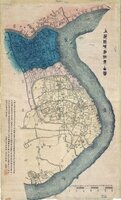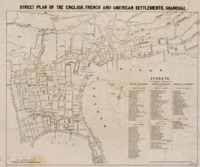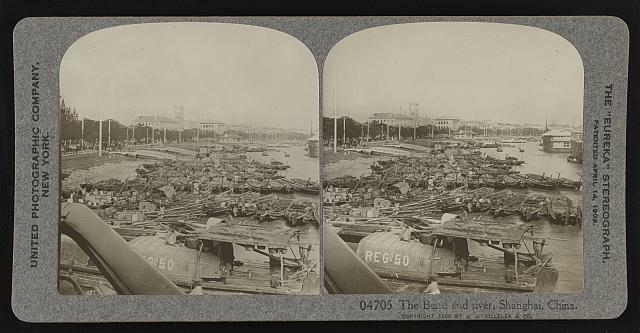International Settlements
Under the Treaty of Nanking, the peace treaty which marked the end of the First Opium War, territory was allocated to the British who believed the city was an important location for coastal trade, and would allow access to the interior of China. Approximately 56 hectares of land was allocated to the British in 1846, which would later be expanded to 192 hectares shortly after, and continue to expand well into the nineteenth century. In 1854, American and French consuls would join in jurisdisdictive control over the settlement, with France opting out of the agreement in 1862, favoring a separate Concession.
Waterfront lots were laid out for development in the Settlements, with foreign merchants responsible for the installation of services and maintenance of public thoroughfares along the waterfront. The creation of jetties, reinforcement of the riverfront with pilings, and new backfilling would produce a new embankment, the Bund. The Bund would come to be an important piece of Shanghai's economy, and would come to symbolize the intrusion of foreign powers, as it was located in the International Settlements, and was lorded over by foreign mercantile powers.


